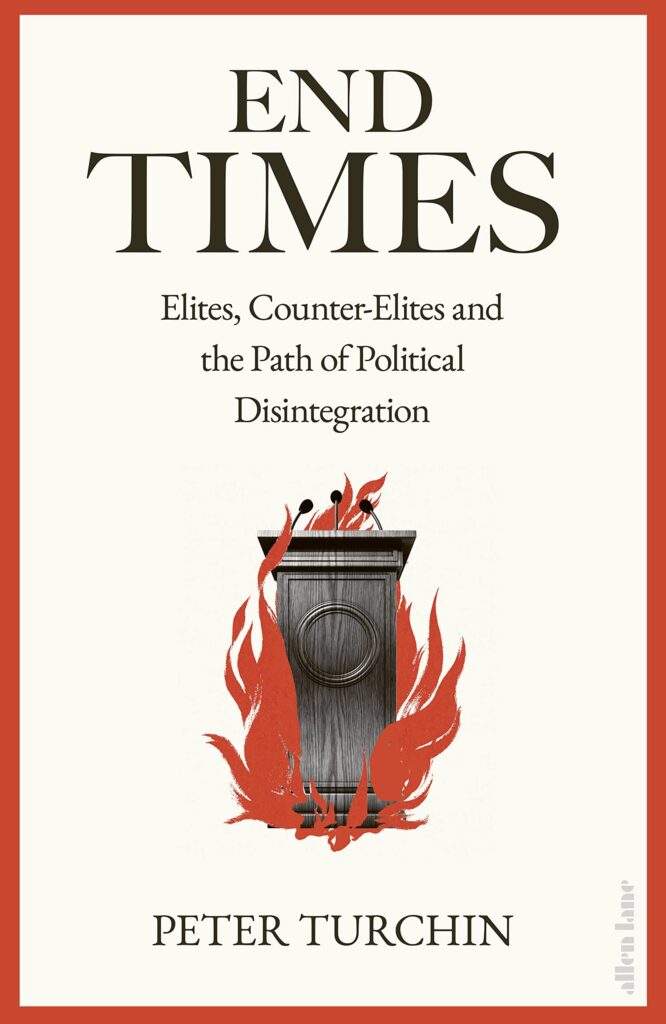
A pioneering social scientist examines the roots of social problems and sees dark days looming.
Everyone wants to know where the society in which they live is going, but answers are elusive. Turchin, an academic working in the emerging field of complexity science, believes he has found a path forward with a discipline called cliodynamics, which melds statistical analysis, social trend data, and historical comparisons to create a sophisticated model.
A well-informed yet heavy, disturbing assessment of where we are now. — Review by Kirkus
A few quotes.
There are many similarities between the age of discord that we are living through now and the one that ended with the Civil War 160 years ago. Pundits today often comment that it feels like we are reliving the 1850s. And, indeed, even though antebellum America and the US today are two very different countries, they share many similarities.
Popular immiseration together with elite overproduction is an explosive combination. Immiserated masses generate raw energy, while a cadre of counter-elites provides an organization to channel that energy against the ruling class.
Donald Trump, Abraham Lincoln, and Hong Xiuquan were very different elite aspirants who lived in very different worlds. Yet, at some deep level, their personal trajectories share much in common. They all lived (or live) during an age of discord, when the social pressures for instability—immiseration and elite overproduction—crested high. All three were elite aspirants who achieved the pinnacle of power, if only for a short time. And they all ruled as their countries unraveled.
The Communist Manifesto proclaims, “The proletarians have nothing to lose but their chains.” But old Marx turned out to be wrong. Immiserated proletarians are not the ones who run successful revolutions. The truly dangerous revolutionaries are frustrated elite aspirants, who have the privileges, training, and connections to enable them to wield influence at scale. Even the minority of newly credentialed youth who get into elite positions right away, like the 20 percent of law school graduates with $190K salaries, are not happy campers, because they feel the general insecurity. The growing proportion of credentialed youth who are doomed to become the educated precariat are the ones who have nothing to lose but their precarity.

When I read what I have quoted below my thoughts were of the San Pedro and Hassayampa Rivers in Arizona. The San Pedro has water in it throughout most years but you can step over it or if forced to wade it is ankle deep. The Hassayampa is dry river bed except when there are heavy rains or you see it near the headwaters.
…[B]etween times we used to go and stand on the bridges and admire the Arno. It is popular to admire the Arno. It is a great historical creek with four feet in the channel and some scows floating around. It would be a very plausible river if they would pump some water into it. They all call it a river, and they honestly think it is a river… Innocents Abroad by Mark Twain
I saw that bull elk again yesterday in almost the same place that I saw him before. This time he was in a herd of 25-30 cows and calves.